It’s very easy these days to start a small business.
It’s very difficult these days to scale a small business.
In my earlier post “Becoming #1,” I used a crude model to talk about the competitive environment and growth trajectory for all organizations:
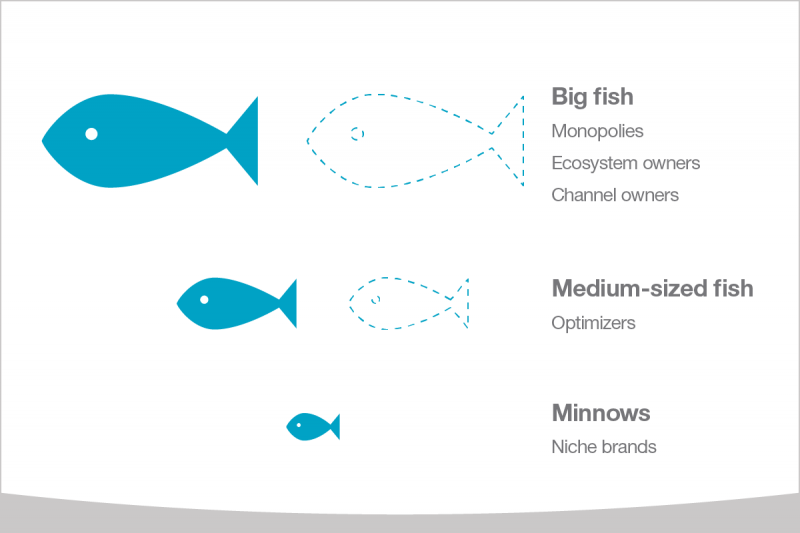
I noted that every organization, at every level of scale, must become either the market leader or the thought leader for their niche or category.
And I was almost but not-quite explicit about the zigzag path all organizations take as they grow:
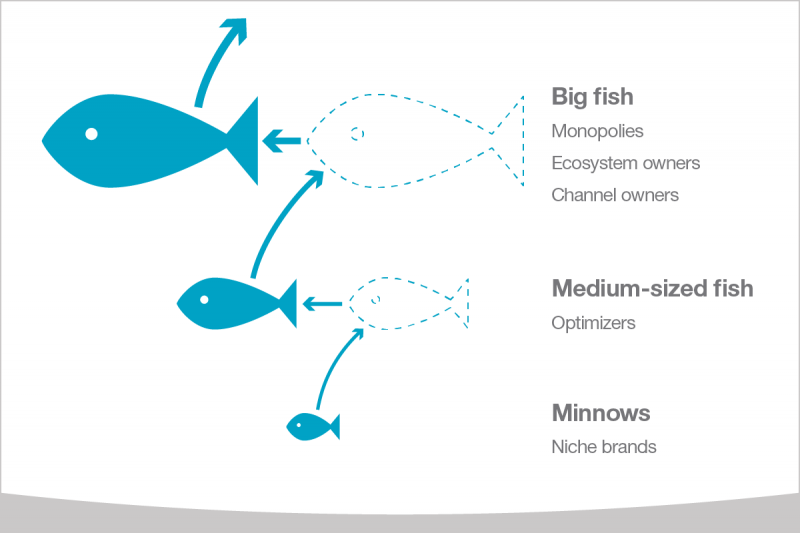
To sum up:
- An organization starts as a niche player with a narrow and precisely defined value proposition.
- Then it grows to become a disruptive thought leader, trying to create a new category around its provocative idea.
- Over time, it becomes the market leader of a category that it has helped coalesce around its own distinctive point of view.
- Then, if possible, it ascends higher, disrupting and creating new categories along the way, aiming for monopoly status.
The easy road gets harder
The kind of marketing needed at each stage of growth is very different.
In my article “What is positioning?” I depicted the following progression in how an organization tells its story at each growth stage:
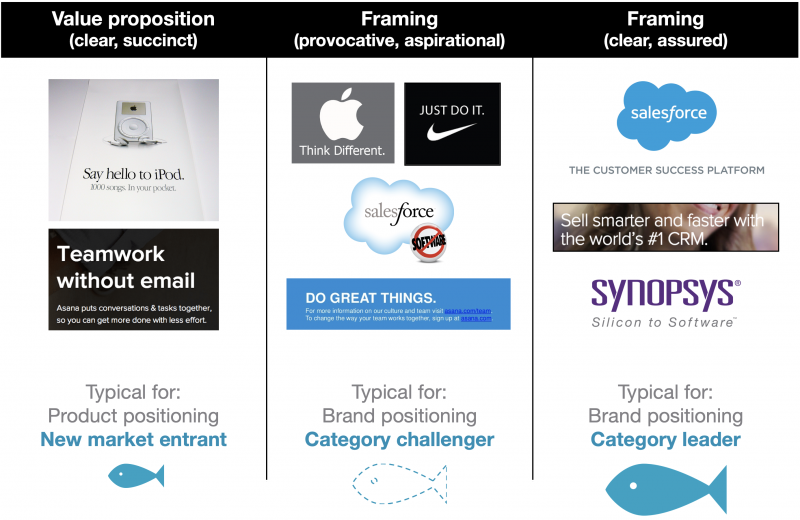
I want to point out that this transition from a niche player to a thought leader requires a much higher investment in time and energy dedicated to marketing and brand (as well as, of course, operations and product).
Telling a thought leadership story requires clear, differentiated ideas, repeated loudly and consistently, with ritualized behaviors and signature moments to make them compelling and believable… all working against the inertial biases of an audience who doesn’t know about you, doesn’t care, or has an existing mindset that you are trying to shift.
An organization making this transition can’t just incrementally add to its existing value proposition or present a confusing buffet of value propositions across multiple offerings and audiences. It needs to have a noteworthy and ownable Big Idea. (As a marketer, I can tell you that no value prop statement is more deadly or forgettable than “We offer baby toys, fishing tackle, pilates classes… and more!“)
Graduating from the niche market leader to the mid-level thought leadership position is, in other words, a predictable “oh shift” moment in every organization’s lifecycle, where the only way to go after the expanded market is to injure your existing profitability and efficiency:
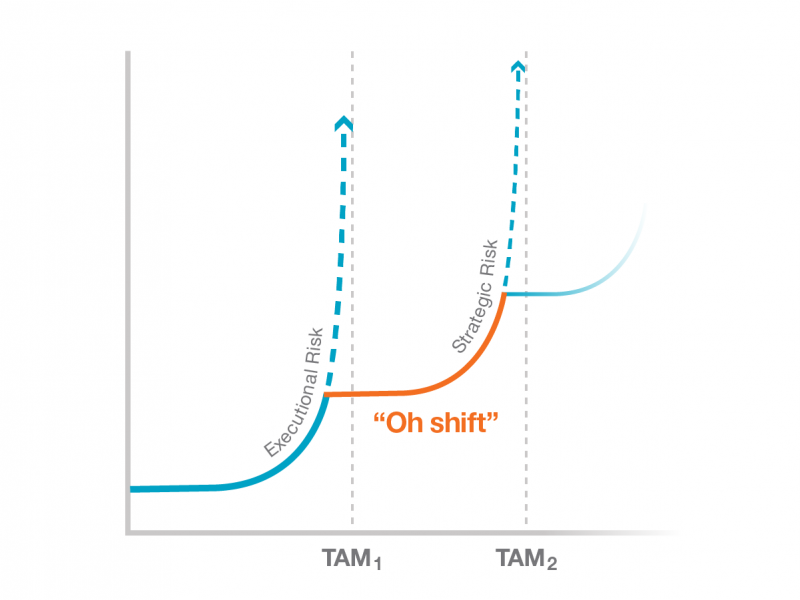
Going after a new Total Addressable Market at some point requires exponential investment, not incremental investment. Small organizations that cannot invest appropriately will cease to grow.
Almost every organization I work with is in this exact position: fixated on short-term revenue or impact with an existing audience… while needing to grow towards that next big opportunity.
The peculiar and particular challenge facing small businesses these days is that there is no longer an obvious growth ladder from niche brand to mid-sized disruptive player status. Startups can use mega doses of VC investment to rapidly ascend to the next level, but most SMBs don’t have access to those kinds of resources.
In Curtains: The Future of the Arts in America, Michael Kaiser writes:
“My experience consulting to a range of corporations in a myriad of industries, coupled with my own observations over thirty years in arts management, have created a deep-seated discomfort with the current state of the art world. The many trends at work now are going to change our art ecology forever. We have been fortunate to live in a remarkable era of arts accessibility, a true golden age. But it is coming to an end… [T]rends in technology, demographics, government support, and arts education are working against us. It is going to be increasingly difficult to thrive, or even survive, as an arts organization in the coming decades. There will be winners, for sure, but I am equally certain there will be a larger group of losers.”
The gathering storm that Kaiser depicts is for the most part not limited to arts organizations, or even nonprofits, but to any small business that finds there are fewer paths to ascend on the way to long-term success.
Monopolies are now dominating the landscape, and the hardy winners that make it to the middle stage, or are already there, are more surefire bets for investors, donors, and customers than building and supporting new and possibly-redundant infrastructure from below. Doordash and Square/Caviar succeed, while individual small restaurants fail.
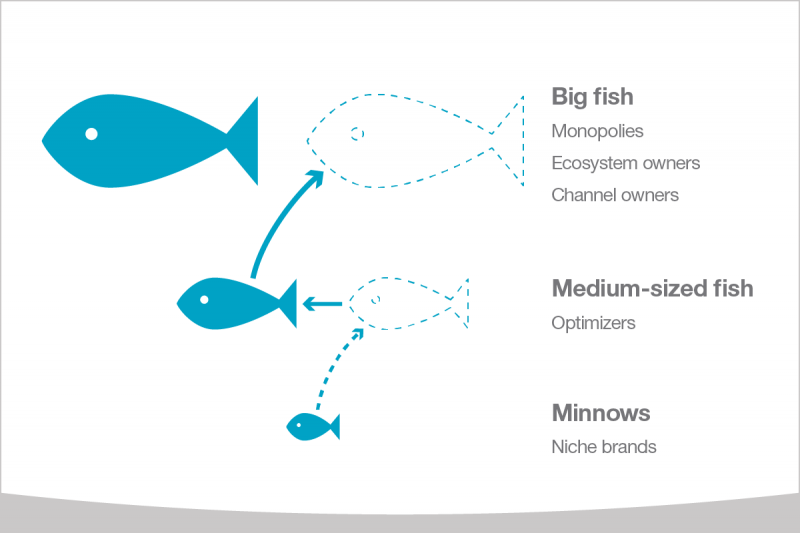
The hard road gets easier
The proliferation of interesting micro businesses, gig economy side hustles, and startup success stories is to some extent distracting from the unique difficulties of small businesses (including small nonprofits) in our current environment.
That said, some small businesses are indeed growing and thriving: ones I keep my eye on include CB Insights, Venkat Rao‘s mini media empire, and the many “turnaround” nonprofit success stories that Michael Kaiser describes in his books. Mergers also remain a viable exit for SMBs who find they can’t grow on their own: across industries and sectors, we’re seeing a lot of them.
Luck, industry, skill, and resource availability of course all play a role, but the small businesses I see succeeding these days are willing to embrace experimentation—failing forward into new products and services, marketing, and operational practices—while standing in the future and foreseeing an expensive and perilous climb ahead.
p.s. For more on the growth path of small businesses, see my partially-dated, but still mostly-valid 2014 post “The future of consulting.”


Leave a Reply